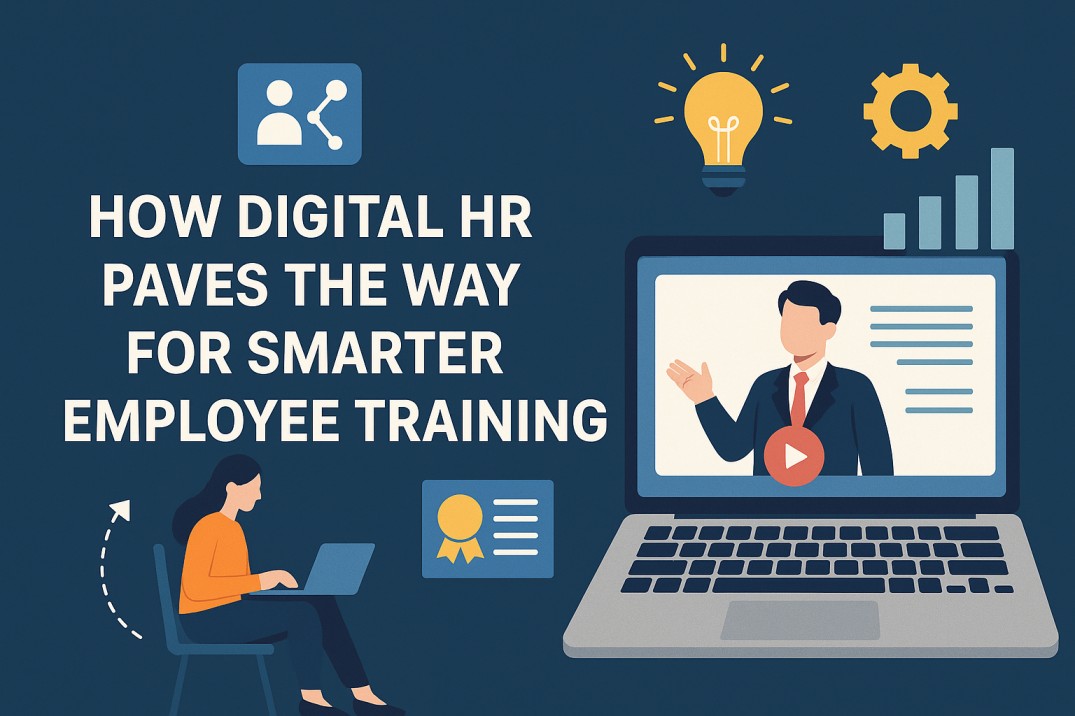During a harassment prevention class, a quiet shift lead once asked whether the two-hour rule for supervisors was optional or a must. That simple question captured the stakes. People want clear answers, not guesswork.
California’s regulations are specific about who needs training, how long it must last, what topics it must cover, and when it must occur. This guide lays it out in plain language so an HR manager, office administrator, or small business owner can move from “not sure” to “done.”
If your company is adopting the Sexual Harassment in California training course, use this as your working playbook.
Why This Training Matters Now
Training is not just a legal checkbox. It sets expectations, provides a shared vocabulary, and shows leaders how to respond when concerns arise. Harassment complaints distract teams, add costs, and sap trust.
Clear education reduces confusion, speeds up reporting, and helps managers respond quickly and fairly. When everyone hears the same message, culture shifts from whispers to straight talk. That is the kind of progress employees notice.
Requirements For Sexual Harassment Training In California
California law requires employers with five or more employees to provide training on preventing harassment. Supervisors must complete at least two hours of training. Nonsupervisory employees must complete at least one hour of training.
Training repeats every two years. New hires require training within six months of their start date. Newly promoted supervisors must complete training within 6 months of promotion.
Seasonal and temporary employees who will work fewer than six months must receive training within 30 calendar days or within 100 hours, whichever comes first. These rules apply whether people work on site or remotely within the state.
Link this section to your requirements for sexual harassment training explainer and your policy overview on Sexual Harassment Training Under California so that readers can go deeper.
Who Must Be Trained
- All supervisors and managers, including team leads who direct the work of others
- All nonsupervisory employees, full-time and part-time
- Seasonal and temporary workers who meet the short-service thresholds
- Workers placed by staffing agencies, with training coordinated by the appropriate employer
When Training Must Happen
- Within six months for new hires and newly promoted supervisors
- Every two years, for all employees who fall under the requirement
- Within 30 days or 100 hours for seasonal and temporary employees, whichever comes first
- On a rolling cadence for ongoing hires, so you do not fall behind.
What The Course Must Cover
A compliant program explains what sexual harassment is, how it shows up, and how to respond. It covers protected categories, gender identity, gender expression, sexual orientation, and abusive conduct.
It gives examples that feel real in your workplace, not just textbook scenarios. It describes reporting options, anti-retaliation protections, supervisor duties, and remedies. Add bystander response skills to help coworkers support one another.
If you publish a topic hub, connect this section to your page on topics covered in sexual harassment training and your “how to choose” guide for a Sexual Harassment in California training course.
Interactivity And Format Rules
California allows classroom sessions, live webinars, and e-learning experiences that are truly interactive. Learners must be able to ask questions and receive guidance from a qualified trainer within a reasonable period.
Quizzes, case studies, and scenario discussions help individuals retain what they have learned.
Whether you deliver training in person or online, give employees a straightforward way to contact a trainer, HR, or a compliance lead.
Can You Train Online
Yes. Online training is allowed if it meets the state’s content, duration, and interactivity rules. A live webinar or a self-paced course with access to a qualified trainer can both meet the mark.
Many employers pair an e-learning module with a short live Q&A to tie the content to internal policies and reporting channels.
When you publish your learning center, link this section to “Can California Sexual Harassment Training Be Done Online” so readers can check the format details.
Recordkeeping And Proof
Good records are your safety net. Keep the employee’s name, job title, training date, delivery method, course provider, the content outline or slide deck, and a certificate of completion when available.
Retain records for at least two years. Store them in a shared folder or an HRIS so you can quickly locate proof during internal audits, insurance reviews, or investigations.
Practical Tips For Tracking
- Add training to onboarding checklists for every California hire.
- Set renewal reminders at 21 months to avoid a last-minute scramble.s
- Keep a single roster template for all sessions and update it after each class.
- Attach certificates to employee profiles so managers can view completion at a glance.
What Happens If You Do Not Train
Although there may not be a posted fine for every missed payment, the risk is real. Failing to train can be used as evidence that a company did not take reasonable steps to prevent harassment.
That increases exposure in a claim and signals to employees that the topic is not a priority. Plaintiffs’ counsel often asks for training records early in a dispute. Clean documentation shortens that conversation.
If your readers want details, tie this paragraph to your page on penalties for failing to provide sexual harassment training.
A Simple 30-Day Compliance Plan
You can align a small or mid-sized team without slowing core work. Use these steps and keep the Sexual Harassment in California training course visible in your project plan.
- Map Headcount And Roles
Confirm you meet the five-employee threshold. List supervisors and nonsupervisors. Add seasonal and temporary workers who will cross the 30-day or 100-hour bar. - Pick The Delivery Mix
Determine who will participate in a live session and who will utilize e-learning. Live sessions work well for supervisors who need Q&A on real scenarios—e-learning scales for larger groups. - Schedule The Minutes
Book two hours for supervisors and one hour for non-supervisors. Offer at least two time slots. Add calendar reminders one week and one day before the session. - Localize The Content
Use examples from your environment, such as field service calls, shared workstations, vendor meetings, or customer-facing roles. Show people exactly how to report concerns. - Collect Proof The Same Day
Export certificates, update the roster, and store materials in a shared folder. Add completion to each employee’s profile. - Set The Renewal Rhythm
Add a recurring reminder at the two-year mark. Give managers a monthly new-hire list so recent employees get trained within six months.
Short Case Story
A hospitality group postponed its supervisor class during peak season. A guest complaint, filed a month later, named two employees and a supervisor.
Because the company had trained non-supervisors on time, used a clear policy, and kept records, the follow-up was faster and fairer for everyone involved.
They still had to finish the supervisor training, but the groundwork steadied the process. That is the value of staying current even when the calendar is full.
Who Should Teach
Qualified trainers include employment attorneys, experienced HR professionals, and educators who work with harassment prevention topics in California.
They should be familiar with state law, federal standards, and how to address practical questions. Even if you use e-learning, identify an internal contact who can answer questions and escalate challenging scenarios to your counselor.
Policy, Reporting, And Culture
Training is one part of a larger system. Publish a short, plain-language policy with definitions, reporting options, and anti-retaliation language.
Offer multiple reporting paths so employees are not stuck if their manager is involved. Coach supervisors to address concerns promptly, document the steps taken, and ensure follow-through.
Reinforce this culture in staff meetings, performance reviews, and onboarding processes. When leaders model the behavior the course teaches, people are more likely to believe the message.
FAQs
Is sexual harassment training in California required for very small employers
The mandate applies to companies with five or more employees, including part-time staff. Even if you fall below that threshold, basic education still helps prevent problems and sets expectations.
Many small teams run a one-hour course during onboarding, then repeat it every two years as they grow. It keeps policies front and center, preparing you for future headcount changes.
How often must sexual harassment training in California be completed
Supervisors require two hours of training every two years. Nonsupervisory employees require one hour of training every two years. New hires must be trained within six months.
Newly promoted supervisors must be trained within six months. Seasonal or temporary employees must receive training within 30 calendar days or within 100 hours, whichever occurs first.
A simple reminder schedule prevents last-minute scrambles.
Can sexual harassment training in California be done online?
Yes. Online courses can meet state standards if they cover required topics, last the full duration, and allow participants to ask questions of a qualified trainer.
Many employers blend e-learning with a short live session to connect content to internal policies, reporting paths, and culture. This approach keeps costs predictable and allows employees to discuss real-life scenarios.
What records prove completion of sexual harassment training in California?
Track the employee’s name, role, date of training, course provider, delivery method, and the materials used.
Save certificates when available. Keep records for at least two years in a central folder or HRIS. Good records make audits faster and help leaders spot who needs a refresher before the two-year cycle ends.
What happens if a company skips sexual harassment training in California?
Skipping training raises risk. It can be used as evidence that the company failed to take reasonable steps to prevent harassment. That weakens the defense in a dispute and can increase costs.
The safer path is to schedule training on a predictable cycle, teach supervisors how to respond effectively, and maintain thorough records that demonstrate consistent follow-through.


















